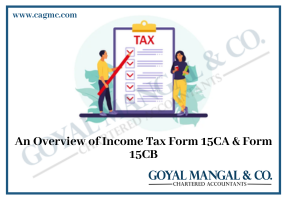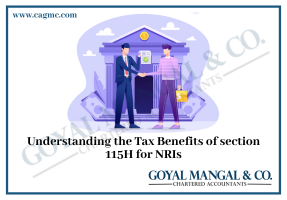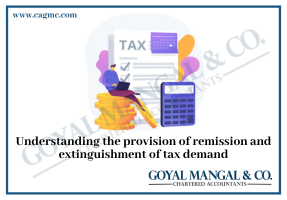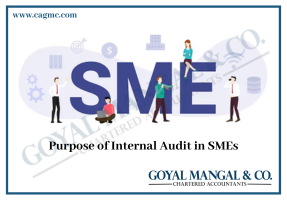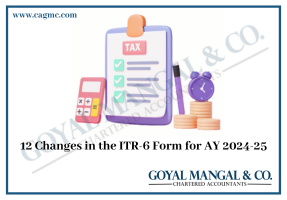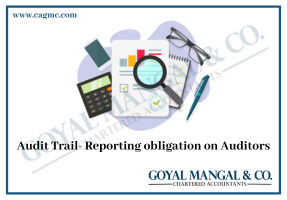At the time when all the ITRs be filed in physical mode than the role of identifying the ITR form for the specific income of the taxpayer was a very important and a technical task. But now in the era of technology, this work is done by the software’s and no one requires to apply that knowledge in the life.
But it is very important to have knowledge about the ITR forms as it is the basic step to fill ITR and if you are not aware about these forms then there is no need to worry here is the article presenting the basic knowledge of ITR forms in simple and understandable language.
What is ITR?
It is a very basic question and a very simple thing that it is a form or structure through which a person can describe its earnings and earning sources to the government and government has the data of all its citizens from where they are getting money to run their livelihood. Obviously, it is a mode through which the government can get its revenue as in the form of Taxes.
What are ITR forms?
Once everyone started filling their ITRs in a same format then government is facing a problem in arranging the data of different taxpayers in its records. Hence, the government described the form system in which the specific form is defined for a specific type of taxpayer on the basis of type of income.
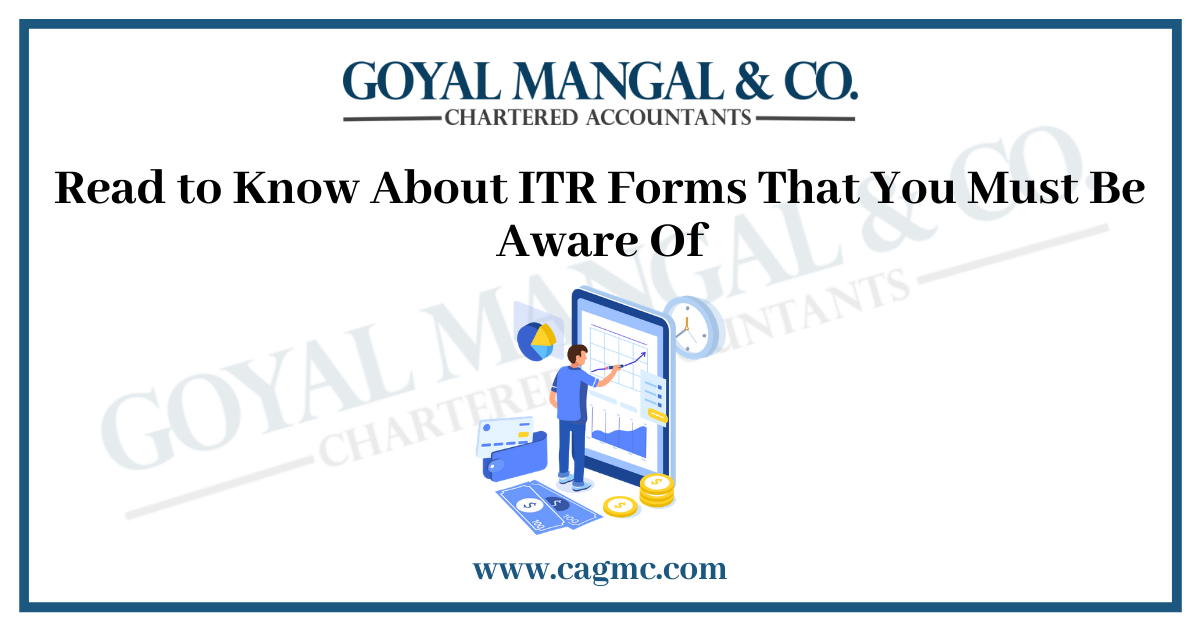
Different types of ITR forms
The government has described 7 categories of ITR forms which are described below;
- ITR-1 or SAHAJ
Resident individuals having income less than or equal to Rs.50 Lakhs from Salary/Pension, Other sources and any one house property. - ITR-2
- Resident individual having income more than Rs.50 Lakhs from all sources covered in ITR-1, capital gains, more than one house property, foreign income and foreign assets.
- Resident individual having income from directorship of a company.
- Resident individual holding unlisted equity shares.
- ITR-3
Resident individual having income as covered in ITR-2 from Business/Profession, As a partner in a firm and any presumptive income more than Rs.50 Lakh.
- ITR-4
Every income covered in ITR-1 presumptive income under Salary/Pension, other sources and one house property, where total income is greater than Rs.50 Lakhs.
- ITR-5
Income of any Firm, LLP, AOPs and BOIs are covered under this form.
- ITR-6
Income of companies not claiming exemption under Section-11.
- ITR-7
Persons/Companies covered under Section 139 (4A), Section 139(4B), Section 139(4C) and Section 139(4D).
To clear more about the above discussed ITR forms, the below table describes the details as under;
| Form | Applicability | Salary | Exempt Income | Capital Gain | House Property | Business Income | Other Sources. |
| ITR-1 | Resident Indian Individuals and HUFs. | YES | YES, if agriculture income is not more than Rs. 5000. | NO | YES, but it should be from only one house property. | NO | NO |
| ITR-2 | HUF and Individuals. | YES | YES | NO | YES | NO | YES |
| ITR-3 | Individuals and Partners in Firms, HUFs | YES | YES | NO | YES | YES | YES |
| ITR-4 | Firm, HUF and Individuals | YES | YES, if agriculture income is not more than Rs. 5000. | YES | YES, but it should be from only one house property. | Only business income that is presumptive. | YES |
| ITR-5 | LLPs, Partnership Firms, AOPs and BOIs. | NO | YES | NO | YES | YES | YES |
| ITR-6 | Companies | NO | YES | NO | YES | YES | YES |
| ITR-7 | Trusts | NO | YES | NO | YES | YES | YES |
From where one can download these ITR forms?
If any taxpayer wants to download these forms, then the official website of income tax provides these forms in PDF format with instructions to fill the forms. Hence, the forms can easily be downloaded by just opening official Income Tax website and click over downloads and here are the forms which you require to download.
How to file an Income Tax Return?
After identifying the ITR form and relevant figures are filed in the form as according to the type of income and taxpayer then one should follow the below steps to file its Income Tax Return with less chances of errors: –
- Download form 26AS and identify any mismatch in the filed details and in the form 26AS and if any then rectify it.
- Form 26AS is type of tax passbook which clearly shows the details regarding TDS, TCS or Advance Tax if paid by the taxpayer during the financial year.
- Calculate Total income for the Financial Year as according to the above records.
- Calculate the Tax Liabilities after applying current Tax Rates.
FAQS:
Q.1 What is ITR-V form and ITR-Acknowledgement?
Form ITR-V defines the data of returns of income in Form ITR-1, ITR-2, ITR-3, ITR-4, ITR-5 and ITR-7 filed but are not e-verified electronically.
Form ITR-Acknowledgement shows the data of returns of income in Form ITR-1, ITR-2, ITR-3, ITR-4, ITR-5 and ITR-7 filed and are verified.
Q.2. While submitting an Income Tax Return is it necessary to attach any document?
The Income Tax Act specifies that documentary proof is required for claiming deduction only. Hence, no any document is required to be submitted as a proof at the time of ITR filing.
Q.4 When income is from more than one house property than which form is to be opted for filing ITR?
Form ITR-2 can be opted for the taxpayer if the income is generated from more than one house property.
Q.5. what described by the section 139 (4A), 4(B), 4(C), 4(D), 4(E) and 4(F)?
Sub sections of Section 139 can be understood as follows:
- Section 139(4A): – Individuals earning income from the property held for religious or charitable purpose as a trust.
- Section 139 (4B): – political parties whose total income exceeds the exemption limit.
- Section 139(4C): – An institution or association under section 10(23A), medical or educational institution, scientific research association or news agency.
- Section 139(4D): – Institutions such as universities and colleges.
- Section 139(4E): – It includes business trust.
- Section 139(4F): – Investment Funds under Section 115UB.

